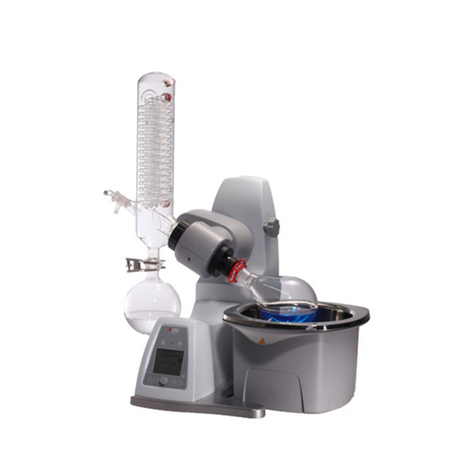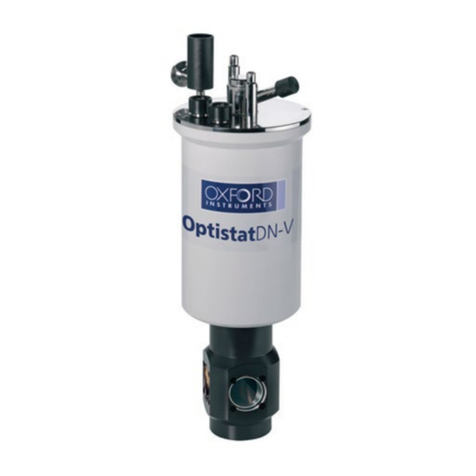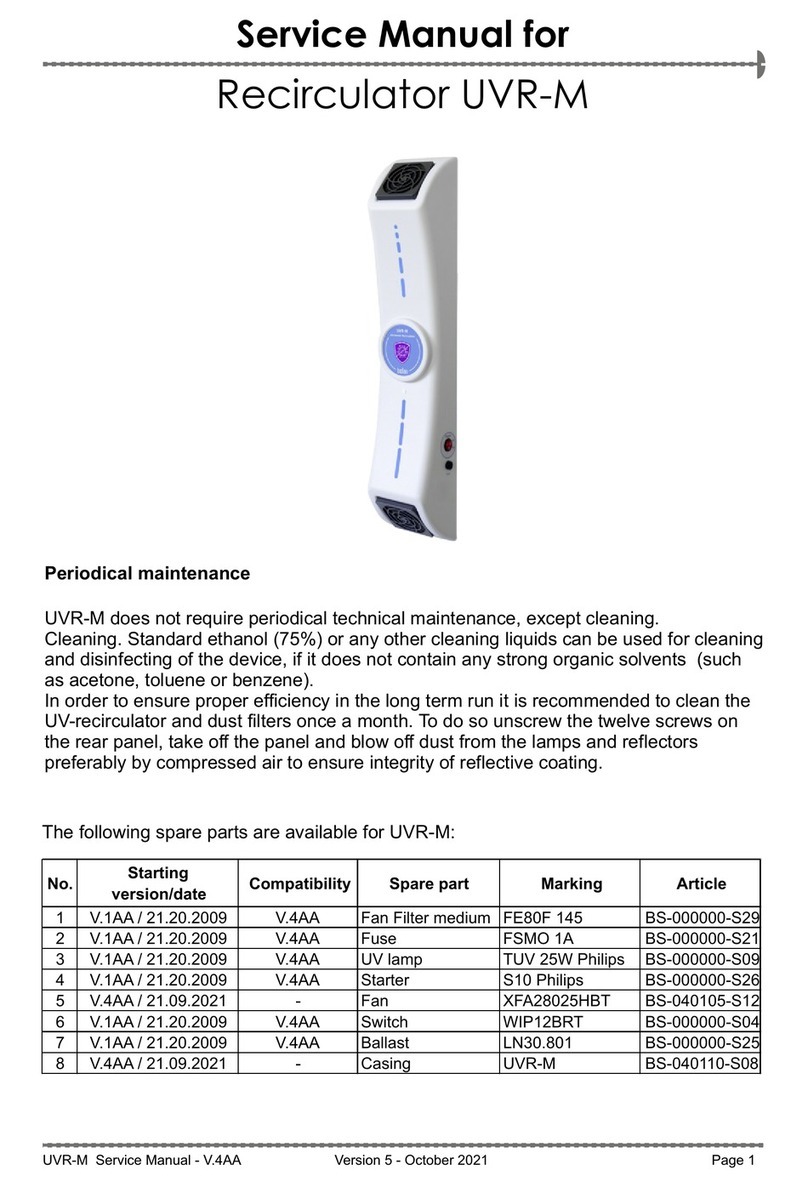DelAgua OXFAM-DELAGUA User manual

OXFAM
DELAGUA
PORTABLE WATER TESTING KIT
USER MANUAL WITH INSTRUCTIONAL CD-ROM
VERSION 4.2
REVISED 2009

OXFAM-DELAGUA Water Testing Kit — Users Manual
1
OXFAM - DELAGUA
Portable Water Testing Kit
VERSION 4.2
REVISED 2009

OXFAM-DELAGUA Water Testing Kit — Users Manual
2

OXFAM-DELAGUA Water Testing Kit — Users Manual
3
CONTENTS
1 The OXFAM - DELAGUA Kit Components 10
1.1 General 10
1.2 Filtration Apparatus and Components 11
1.3 Contents of the Spares Case 11
1.4 Materials Needed for Testing 12
2 Sampling Programmes 13
2.1 Selection of sites and frequency of sampling on a network supply 13
3 Preparation of the Kit 15
3.1 Sterilisation of the Filtration Apparatus 15
3.2 Preparation of Culture Medium in the Laboratory 17
3.3 Preparation of Culture Medium in the Field 19
3.4 Storage of Culture Medium 20
3.5 Sterilisation of the petri-dishes 20
3.6 Disposal of Contaminated Material 21
3.7 Absorbent Pads and Dispenser 21
3.8 Methanol Dispenser 22
4 Sampling Methods 23
4.1 Sampling from a Tap 23
4.2 Sampling from a Lake, Reservoir or other Surface Water Source 24
4.3 Sampling from an Open Well or Storage Tank 26
5 Processing of Samples using the Kit 27
5.1 Introduction 27
5.2 Analysis of Free Chlorine Residual and pH 27
5.3 Turbidity Analysis 29
5.4 Bacteriological Analysis of Water 31
6 Care and Maintenance of the Kit 45
6.1 The Battery 45
6.2 Electronic Components and the Incubator 46
6.3 Filtration Apparatus 46
6.4 Chlorine and pH Comparator and Turbidity Tubes 46
6.5 Kit Case 46
6.6 Maintenance 47
7 Evaluation and Repair of the Kit 48
7.1 Fault Finding in the Incubator, Battery and Charger 48
7.2 Fault Finding Chart 51
7.3 Checking and Recalibrating the Incubator 52

OXFAM-DELAGUA Water Testing Kit — Users Manual
4

OXFAM-DELAGUA Water Testing Kit — Users Manual
5
Appendix A 56
Incubator electronic circuit diagram.
Appendix B 57
Field Checklist
Appendix C 58
Spares list
Appendix D 60
Daily report sheet
Appendix E 61
Alternative sources of water for media preparation
Appendix F 62
Additional instructions for operating the dual incubator kit
Appendix G 64
Additional instructions for operating the Single Light-weight kit
Appendix H 64
Additional instructions for operating the External Battery Pack
Appendix I 65
Alternative media

OXFAM-DELAGUA Water Testing Kit — Users Manual
6

OXFAM-DELAGUA Water Testing Kit — Users Manual
7
OXFAM - DELAGUA
Portable Water Testing Kit
Users Manual
Revised 2009
This equipment was designed to test for the critical parameters specified in World
Health Organization (WHO) Guidelines for Drinking Water Quality, Second
Edition, Volume III.
The equipment should only be used by trained personnel familiar with those
guidelines.
For more information about the kit and for technical help and guidance, please
contact Delagua Water Testing Ltd..
Delagua Water Testing Ltd, University of
Surrey, Guild ford, GU2 7XH, United Kingdom
Tel: +44 1483 689209/689281
Fax: +44 1483 689971
techsupport@delagua.org
Website:http://www.delagua.org

OXFAM-DELAGUA Water Testing Kit — Users Manual
8
Copies of this manual are available in several languages. Please consult our
website for current availability. Abridged versions of the manual are available to
download.
If you regularly use the OXFAM - DELAGUA water testing kit and have
translated the manual into another language, please send us the translation. Under
these circumstances, we normally organise printing and give free copies to the
programme which provided the translation.
We are continually trying to improve the OXFAM - DELAGUA water testing kit
and because of this, some components may be different from those which appear in
the manual. We also welcome suggestions from users about ways for improving
the kit to meet their own particular needs.
Training
Purchasers of the kit are entitled to participate in a one-day course at Delagua
Water Testing Ltd in the use of the kit. The course is free of charge.
Delagua also offers one and 2-week training courses overseas that include water
quality testing, risk assessment, water supply disinfection and use and maintenance
of the OXFAM - DELAGUA kit.
Products
Delagua is pleased to provide a broad range of products for all your water testing
requirements. These products have been selected to fulfil the particular needs of
our clients many of which work in remote and challenging conditions.
Risk Assessment
Delagua has developed a risk assessment tool to assist clients with monitoring and
evaluating water quality. The tool is designed to assist in better understanding the
risks to health through water, sanitation and health and generates a water quality
report for clients.
For further information about the products and
services provided by Delagua, please see our website at
www.delagua.org

OXFAM-DELAGUA Water Testing Kit — Users Manual
9
Instructional CD-ROM
This version of the manual includes a CD-ROM that provides guidance on the use
and maintenance of the kit and includes video sequences that demonstrate the
procedures described in the manual. The CD-ROM will start automatically after it
is inserted into your CD-ROM drive. This is the first time we have produced a
training CD-ROM for the kit and so we would welcome your general comments
and any suggestions that would help us to improve the product in the future.
Note: The main sections of this manual describe the use
and maintenance of the single incubator water test kit.
The additional procedures for the operation of the dual
incubator kit, Single Light-weight kit and the External
Battery Pack are described in Appendix F, G & H
respectively.

OXFAM-DELAGUA Water Testing Kit — Users Manual
10
1 The OXFAM - DELAGUA Kit Components
1.1 General
The kit also includes an electronic timer with its own instructions for use.

OXFAM-DELAGUA Water Testing Kit — Users Manual
11
1.2 Filtration Apparatus and Components
1.3 Contents of the Spares Case

OXFAM-DELAGUA Water Testing Kit — Users Manual
12
1.4 Materials Needed for Testing
Before you start to use your OXFAM - DELAGUA water testing kit, you will need
the following materials:
For preparation of culture medium:
1. Pressure cooker, portable steriliser or autoclave.
2. Electric heating element, gas burner, stove or similar to heat the steriliser.
3. Distilled water (for alternatives see Appendix E).
4. Means of measuring distilled water eg. Measuring cylinder, or graduated
beaker.
For using the kit in the field:
1. Methanol (for alternatives see Section 5.8).
2. Paper towels or clean cloths.
3. Wax pencil or marker pen.
4. Report sheets (see Appendix D).
5. Cigarette Lighter (any fluid filled lighter is suitable).
On receipt of a new Oxfam - Delagua kit we would
recommend that you recharge the battery fully
(Section 6.1) and check the operating temperature of
the incubator (Section 7.3).

OXFAM-DELAGUA Water Testing Kit — Users Manual
13
2 Sampling Programmes
2.1 Selection of sites and frequency of sampling on a network supply
Samples should be taken from locations
that are representative of the water
distribution network and household
connections.
Where there are several sources and a
mixed distribution system, it is
necessary to take account of the
variation that may exist in the system
and incorporate this into the sampling
programme.
Where there is a branched distribution
system, samples should be taken at
random points evenly spread throughout
the system.
Where there are main branches and a
remote periphery (as shown), greater
attention should be devoted to the main
branches and remote points in the
network.
The recommended minimum frequencies for sampling of both piped supplies and
point sources are shown in the tables below:
Minimum Frequency of Sampling and Analysis of Piped Water Supplies
Population served Minimum frequency of sampling
Less than 5,000 One sample per month
5,000 to 100,000 One sample per 5,000 population per month
More than 100,000 20 samples monthly plus one extra sample per 10,000
population
Location of key sample points on a network distribution
system.

OXFAM-DELAGUA Water Testing Kit — Users Manual
14
Minimum Frequency of Sampling and Analysis of Unpiped Water Supplies
Source and
mode of supply Bacteriological Physical/
Chemical Remarks
Open well Sanitary protection
measures and
testing only if
situation demands
Once initially
for community
wells
Pollution usually
expected
to occur
Covered well.
Shallow tubewell
with handpump
Sanitary
protection
measures and
testing only if
situation
demands
Once initially.
Thereafter as
situation
demands
Testing needed when
Environmental
conditions
change or when an
outbreak or increase in
waterborne disease
occurs
Deep tubewell
with handpump Once initially.
Thereafter as
situation
demands
Once initially.
Thereafter as
situation
demands
Testing needed when
environmental
conditions
change or when an
outbreak or increase in
waterborne disease
occurs
Springs and piped
supplies Once initially.
Thereafter as
Situation demands
Test periodically for
residual
chlorine if water is
chlorinated
Testing needed when
environmental
conditions
change or when an
outbreak or increase in
waterborne disease
occurs
Community
rainwater
collection
systems
Sanitary
protection
measures and
testing only if
situation
demands
Not needed
Source: Adapted from WHO Guide lines for Drinking-Water Quality Volume
III. Second Edition, Geneva, 1985.
We would recommend that you refer to the WHO website (www.who.int) for
the latest advice regarding sampling and analysis of water supplies.

OXFAM-DELAGUA Water Testing Kit — Users Manual
15
3 Preparation of the Kit
3.1 Sterilising the Filtration Apparatus
The sample cup and the filtration apparatus must be sterilised before use and re-
sterilised between samples when analysing water from 2 different sources.
Sterilising the equipment in the field presents some practical difficulties and must
be carried out using simple methods. The most appropriate is the use of methanol,
which is described below. When methanol is burnt in a low oxygen atmosphere -
for example, in the closed sample cup - formaldehyde gas is produced as a by-
product of combustion.
Formaldehyde gas is a very effective disinfectant. Methanol is expensive to freight
and requires special transport conditions. We would recommend that you first try
to obtain methanol in-country from a pharmaceutical supplier, a local hospital or
university laboratory. If necessary, however, methanol can be supplied by the
Delagua Water Testing Ltd on request.
If methanol is not available, the filtration apparatus and sample cup can be
sterilised by immersion in boiling water for 10 minutes.
Procedure for sterilising the filtration apparatus using methanol
Note: Methanol is the only alcohol suitable for sterilising the filtration
apparatus; there is no substitute.
1. Carefully dry the sample cup and
filtration assembly with a clean dry
towel or tissue.
2. Using the plastic collar, secure the
filtration funnel in the loose but not
free position (see Section 5.4.4 [9])
which allows the formaldehyde gas to
penetrate all areas of the filter head.
Dry the sample cup

OXFAM-DELAGUA Water Testing Kit — Users Manual
16
3. Pour about 1ml (approximately
20 drops) of methanol into the sample
cup.
4. Carefully ignite the methanol in the
sample cup using the cigarette lighter.
Place the cup on a flat surface which will
not be damaged by heat.
Caution: Keep the mouth of the sample
cup away from your face and the hole
uppermost to prevent methanol running
onto your hand.
5. Allow the methanol to burn for several
seconds and, when almost completely
burned up (ie. as the flames are dying
down), place the filtration head over
the sample cup and push firmly into
place to form a good seal.
Add 20 drops (approximately 1ml)
of methanol
Carefully ignite the methanol
Replace the filtration head

OXFAM-DELAGUA Water Testing Kit — Users Manual
17
6. Keep the filtration apparatus sealed for at least 15 minutes before use.
Note: It is best to sterilise the filtration apparatus immediately after each analysis
and to keep the filtration apparatus in a sterile condition during transport and
storage. In this way, the filtration apparatus is always ready for use.
3.2 Preparation of Culture Medium in the Laboratory
You will need the following items:
1. 38.1g of Membrane Lauryl Sulphate Broth (MLSB)(a)
2. Distilled water (b). Check that the pH of the water is between 7.0 and
7.8 using the comparator and phenol red tablets (Section 5.2)
3. Ten polypropylene bottles (60ml)
4. Measuring cylinder or graduated flask
5. Clean flask or beaker, approximately 1 litre capacity
6. Pressure cooker, steriliser or autoclave(c)
7. Heating element, stove or burner
(a) The medium is available in 38.1g, pre-weighed amounts from Delagua
Water Testing Ltd
(b) See Appendix E for suggested alternative sources of water
(c) A portable steriliser kit is available from Delagua Water Testing Ltd
Method
1. Carefully wash the plastic polypropylene bottles in clean, warm water before
use. If necessary, use a little detergent and then rinse well with clean water to
remove all traces of the detergent.
2. Measure out 500ml of distilled water using the measuring cylinder or
graduated flask. Decant approximately half of the water into the clean flask or
beaker.

OXFAM-DELAGUA Water Testing Kit — Users Manual
18
3. Add the 38.1g of MLSB powder to the distilled water in the clean flask or
beaker and stir until the powder has dissolved. Gentle heat can be applied if
the powder is slow to dissolve. Add the remaining volume of distilled water
and continue stirring to thoroughly mix the broth.
The culture medium will be a bright red colour when dissolved.
Note: MLSB is a fine, but non-hazardous powder. However, the dust may irritate
the nose or upper respiratory tract if inhaled. Take care to avoid creating excess
dust when handling the powder and cover the nose and mouth with a cloth or dust
mask to reduce exposure. Spillages can be cleaned up using water and an absorbent
cloth.
4. Pour a suitable volume of culture medium (approximately 50ml, but no less
than 40ml) into each of the 10 polypropylene bottles. This provides sufficient
medium in each bottle to carry out 16 tests; the maximum that can be
performed in one day using the Delagua kit.
5. Replace the screw caps on the polypropylene bottles. Make sure the caps are
secure but do not tighten. Leaving the caps slightly loose prevents the bottles
from collapsing during sterilisation.
6. If an autoclave is available, sterilise the bottles at 121°C (equivalent to 1 bar,
or 15 psi steam pressure) for 15 minutes. Tighten the caps carefully once the
medium has cooled.
7. If you do not have access to an autoclave, then a household pressure cooker or
portable steriliser may be used. Place the bottles in a rack inside the cooker
(they may melt if placed directly on the base of the cooker), replace the lid and
heat to full pressure (about 1 bar or 15psi).
Once the cooker has reached full pressure allow steam to issue from the
release valve for 5 minutes, then time the 15 minutes sterilisation cycle using a
stopwatch or clock. At the end of the 15 minutes, switch off the heat and allow
the cooker to cool until it is comfortable to touch. Remove the media bottles
and tighten the caps.
8. Label the bottles to indicate sterilised contents and the date and batch of
medium.

OXFAM-DELAGUA Water Testing Kit — Users Manual
19
3.3 Preparation of Culture Medium in the Field
You will need the following items:
1. 38.1g of Membrane Lauryl Sulphate Broth (MLSB)(a)
2. Distilled, or clean water(b)
3. 10, polypropylene bottles (60ml)
4. Measuring cylinder or graduated beaker
5. Portable steriliser(c) or pressure cooker or cooking pot or pan
(a) The medium is available in 38.1g, pre-weighed amounts from Delagua Water
Testing Ltd
(b) See Appendix E for suggested alternative sources of water
(c) A portable steriliser kit is available from Delagua Water Testing Ltd
Method
1. Carefully wash the plastic polypropylene bottles in clean, warm water before
use. If necessary, use a little detergent and then rinse well with clean water to
remove all traces of the detergent.
2. Use distilled water if possible. If this is not available obtain the cleanest water
possible. DO NOT use water that has been treated with chlorine or any other
chemical disinfectant.
3. Use the comparator and phenol red tablets in the kit to check that the pH of the
water is between 7.0 and 7.8. If it is not, it will be necessary to find an
alternative source of water.
4. Measure out 500ml of clean water in a beaker.
5. Add 38.1g of the MLSB powder to the 500ml of water in the beaker.
Mix to dissolve the powder completely. Apply gentle heat if the powder is
slow to dissolve. The culture medium will be clear with a bright red colour
when dissolved.
6. Pour a suitable volume of culture medium (approximately 50ml, but no less
than 40ml) into each of the 10 polypropylene bottles. This is sufficient
medium in each bottle to carry out 16 tests; the maximum that can be
performed in one day using the Delagua kit.
7. Replace the screw caps on the polypropylene bottles. Make sure the caps are
secure but do not tighten. Leaving the caps slightly loose prevents the bottles
from collapsing during sterilisation.
8. If a pressure cooker is available, sterilise the culture medium as described in
Section 3.2, paragraph 7.
9. If a pressure cooker or portable steriliser is not available, the medium can be
sterilised using a process called Tyndellisation. Note, this
Table of contents
Popular Laboratory Equipment manuals by other brands
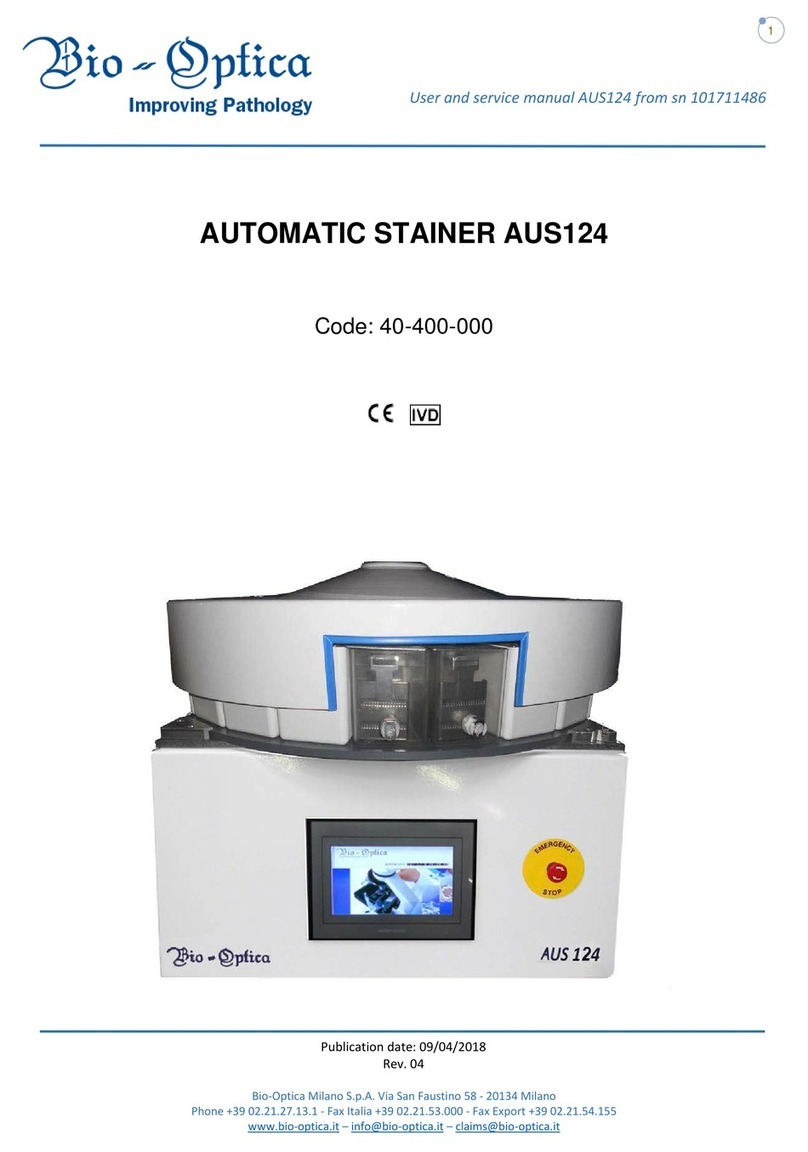
Bio-Optica
Bio-Optica AUS124 User and service manual
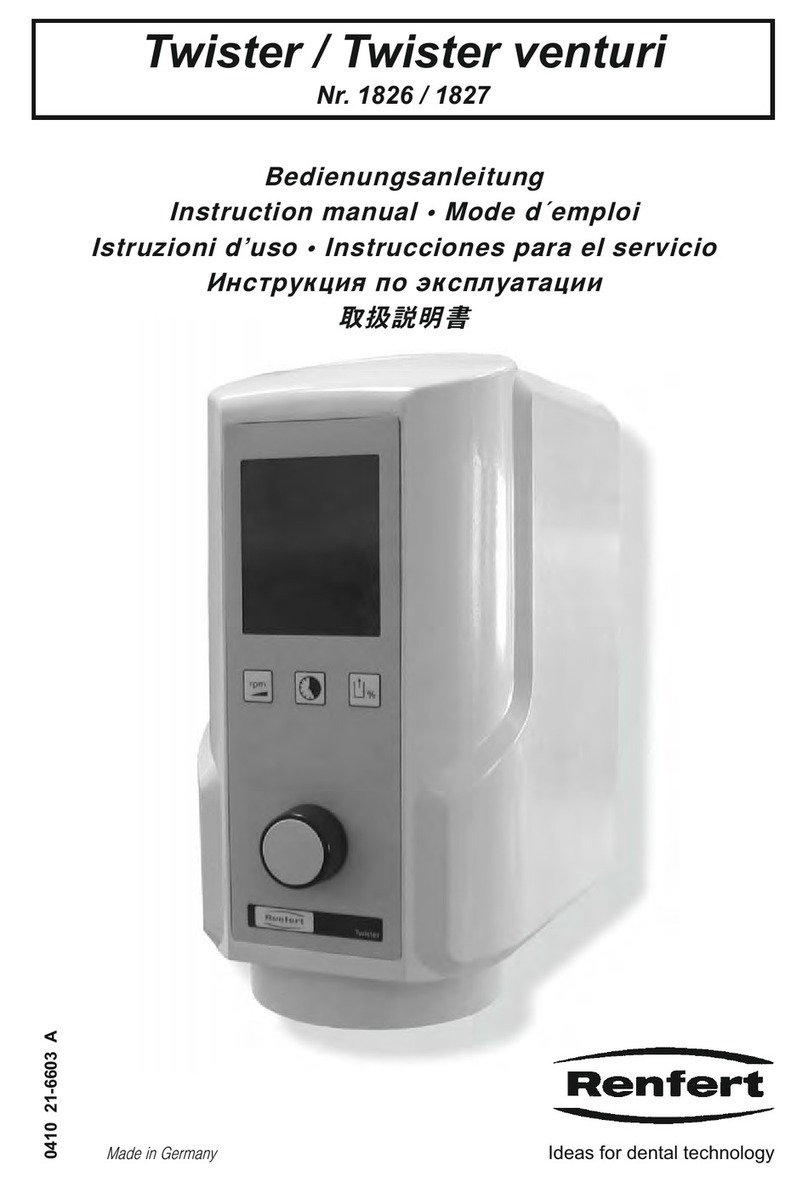
Renfert
Renfert 1826 instruction manual
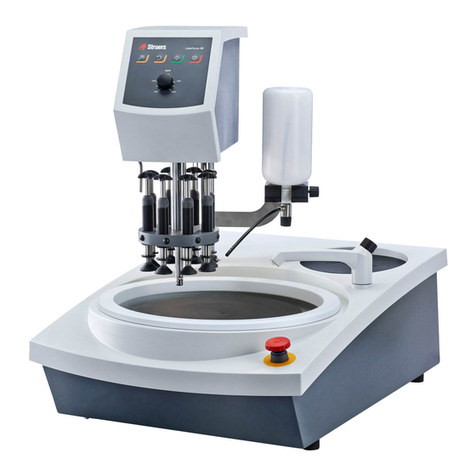
Struers
Struers LaboForce-Mi instruction manual
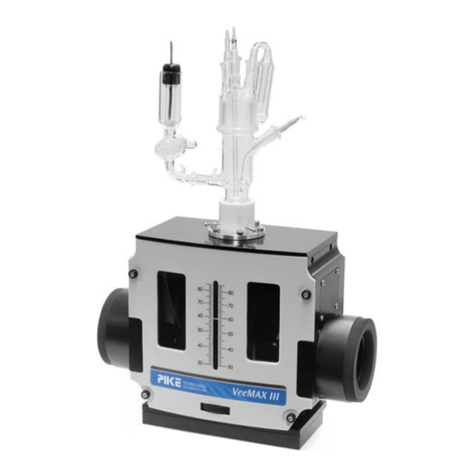
PIKE Technologies
PIKE Technologies Jackfish Installation and user guide
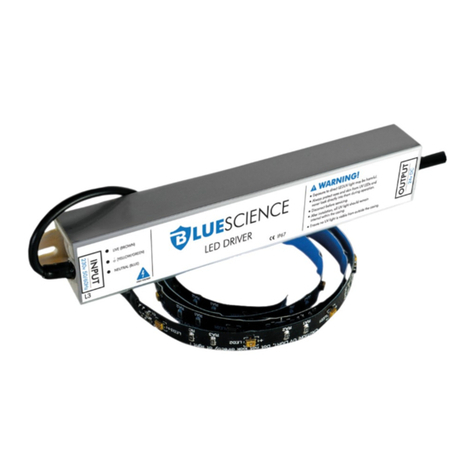
Bluescience
Bluescience Pro installation instructions
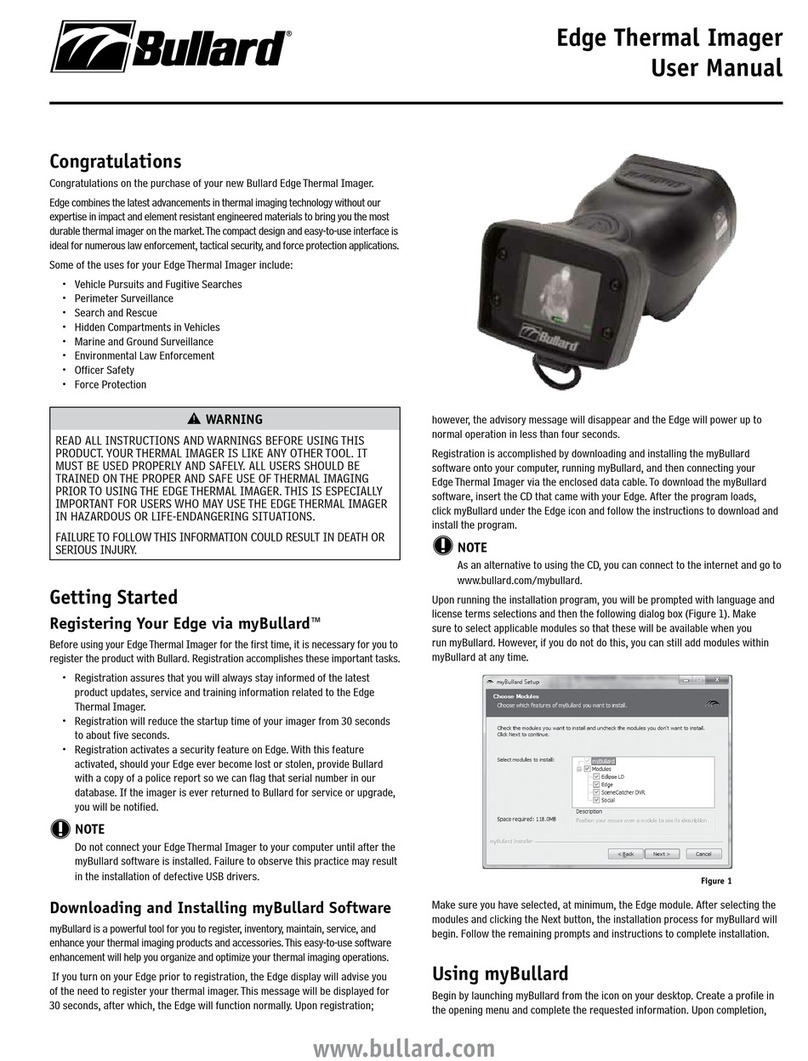
Bullard
Bullard Edge Thermal Imager user manual
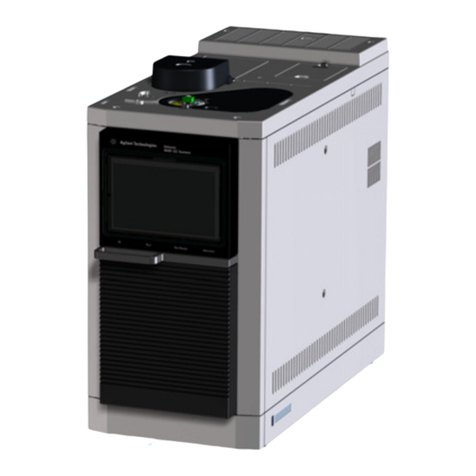
Agilent Technologies
Agilent Technologies Intuvo 9000 Installation and First Startup

REITEL
REITEL RETOMIX COMFORT operating instructions
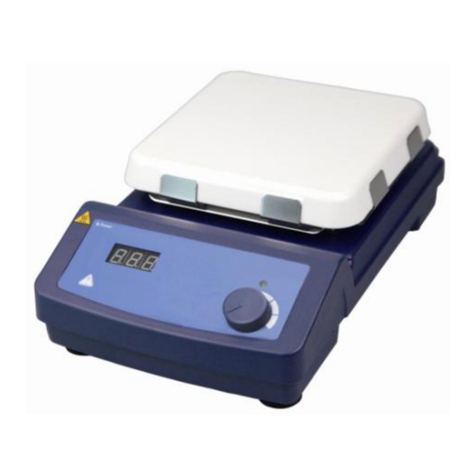
Scilogex
Scilogex SCI550-H user manual
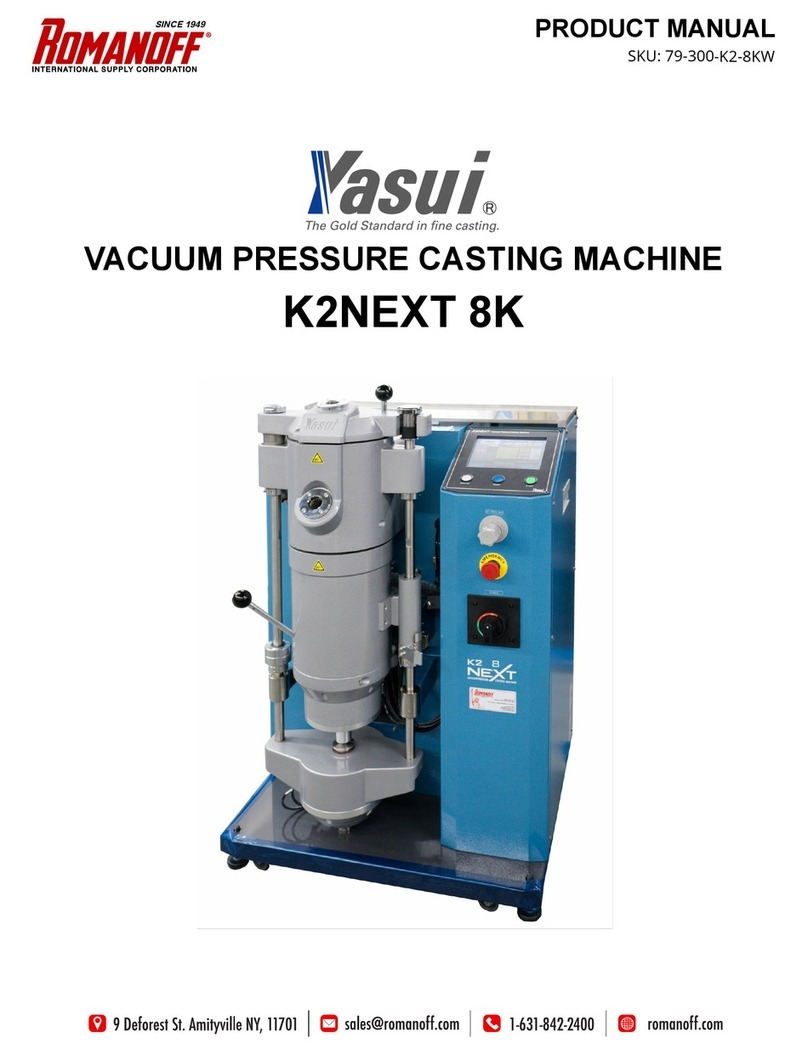
ROMANOFF
ROMANOFF Yasui K2NEXT 8K product manual
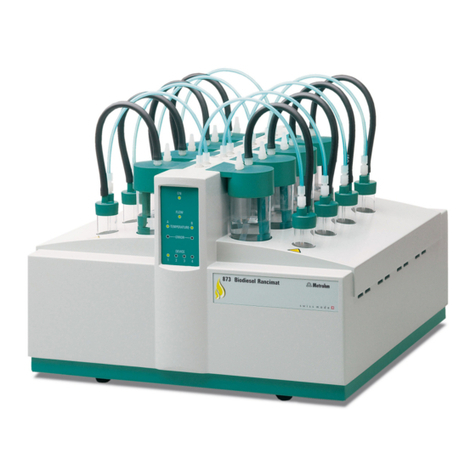
Metrohm
Metrohm 873 Biodiesel Rancimat manual
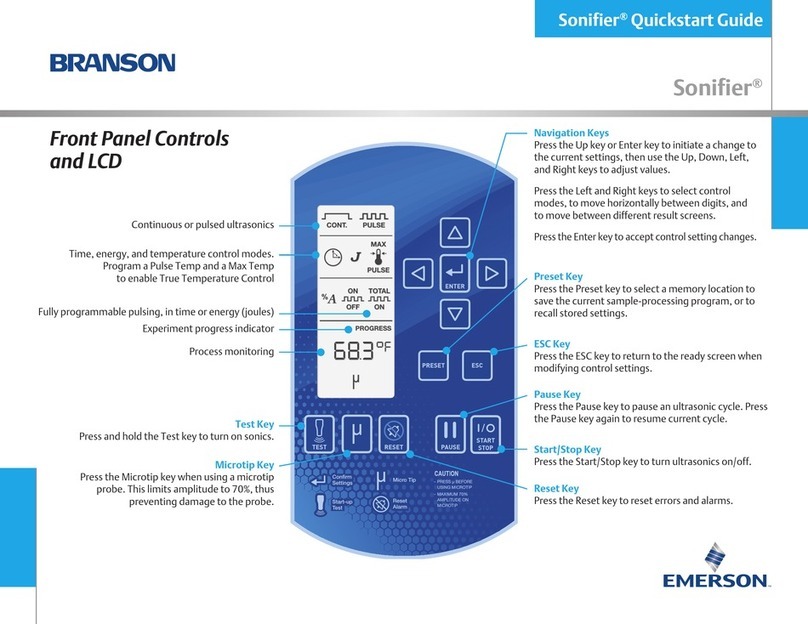
Emerson
Emerson Branson Sonifier quick start guide
